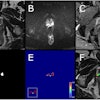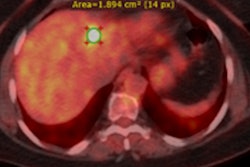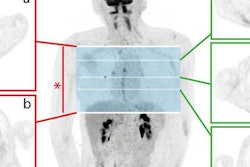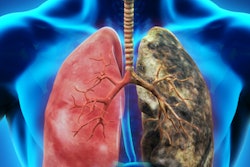
Swiss researchers have found that FDG-PET/CT is "not superior" to contrast-enhanced CT in the detection and evaluation of non-small cell lung cancer (NSCLC) recurrence two years after follow-up curative treatment. Their study was published online on 4 October in the Annals of Thoracic Surgery.
The prospective randomized pilot study reported little difference between the two modalities, for example, regarding potentially curable NSCLC lesions. Among 130 FDG-PET/CT surveillance scans, the researchers found only seven (5%) potentially curable cancer cases. From 138 contrast-enhanced CT exams, they observed only nine (6%) potentially curable recurrences.
"PET/CT may thus not be associated with a clear advantage over contrast-enhanced CT in detecting cancer recurrence during two years following curative-intent treatment of NSCLC," wrote lead author Dr. Franco Gambazzi, from Cantonal Hospital Aarau, and colleagues. "The routine use of PET/CT as the primary imaging surveillance modality after curative-intent treatment of NSCLC appears unjustified in view of the high costs of PET/CT."
NSCLC recurrence
Despite treatment for NSCLC patients, cancer recurrence and related deaths remain common in this population. Previous research has estimated posttreatment cancer recurrence between 6% to 10% per person-year and second primary lung cancer ranges at 3% to 6% per person-year.
For many years now, FDG-PET and FDG-PET/CT have played meaningful roles in staging NSCLC tumors due to the heightened sensitivities and specificities, both of which have proven better than CT alone. However, after treatment, use of the two modalities are "discouraged by many guidelines, mainly due to the lack of scientific data, fear of false positive findings, and the costs of these methods," the authors noted. Therefore, they sought to gauge the efficacy of FDG-PET/CT to "correctly identify cancer relapse/second primary lung cancer more frequently than contrast-enhanced CT during two years after curative-intent treatment of NSCLC patients."
A total of 96 patients were screened for the study between October 2011 and August 2014 and histologically confirmed for a positive NSCLC tumor at the Cantonal Hospital Aarau. Tumors ranged from stage I to stage III. Patients with stage IV NSCLC also were included if they presented with solitary, completely resected brain metastases and had completed curative treatment (Annals of Thoracic Surgery, 4 October 2018).
FDG-PET/CT scans (Biograph MCT 40, Siemens Healthineers) for tumor staging were performed with a dose of 5 MBq/kg of FDG based on body weight from the skull to the middle of the thigh 60 minutes after injection. CT exams of the chest were performed on either a 64- or 320-detector-row scanner (Aquilion 64 CT, Aquilion One CT; Toshiba Medical Systems).
Follow-up surveillance
Following treatment, 50 patients were randomly assigned to the FDG-PET/CT group (mean age, 67 years; range, 61-74 years) and 46 patients (mean age, 61 years; range, 56-70 years) went to the contrast-enhanced CT group. All patients were followed for the next two years, with clinical exams and either FDG-PET/CT or contrast-enhanced CT scans performed at six-month intervals. If clinicians suspected NSCLC recurrence, the patient completed the study and was further evaluated diagnostically with FDG-PET/CT or contrast-enhanced CT, a brain CT scan, bronchoscopy, or therapeutic surgery.
Among the 130 FDG-PET/CT surveillance scans and 138 contrast-enhanced CT surveillance scans, the researchers observed 25 patients (50%) in the PET/CT group and 22 patients (48%) in the contrast-enhanced CT group with a suspicion of cancer recurrence. Within both groups, 14 patients had their recurrent NSCLC confirmed. Given the almost identical results, there was no statistically significant difference between FDG-PET/CT and contrast-enhanced CT in accurately detecting cancer recurrence.
| Posttreatment detection of NSCLC recurrence | |||
| FDG-PET/CT | Contrast-enhanced CT | p value* | |
| Patients with suspicion of NSCLC recurrence | 25 (50%) | 22 (48%) | |
| Patients with confirmed NSCLC recurrence | 14 (28%) | 14 (30%) | 0.79 |
| Sensitivity | 88% | 93% | 1.00 |
| Specificity | 62% | 72% | 0.58 |
| Positive predictive value | 56% | 64% | 0.77 |
| Suspicion of NSCLC recurrence | 25 (50%) | 22 (48%) | |
The two modalities also were comparable in false-positive findings among patients with initial stage I or II NSCLC. There were 11 false-positives (100%) among the 11 stage I or II patients in FDG-PET/CT group, compared with six false positives (75%) among the eight stage I or II patients in the contrast-enhanced CT group.
"Considering the substantially higher costs associated with PET/CT compared with contrast-enhanced CT, the latter appears to be the preferred option for routine surveillance (at least short-term) after curative-intent treatment of NSCLC," Gambazzi and colleagues wrote. "However, some patients with a specific tumor stage or histopathology may require PET/CT follow-up based on their individual characteristics."
The researchers cited the small sample size as one of the study's limitations, "thus the detection of minor differences in performance between the two imaging procedures [was] not possible."
The "limited" two-year follow-up time also prompted the authors to recommend "a longer observational time with survival as [the] primary endpoint" to explore and validate the "clinical relevance of the two imaging procedures in posttreatment surveillance of NSCLC patients."



















